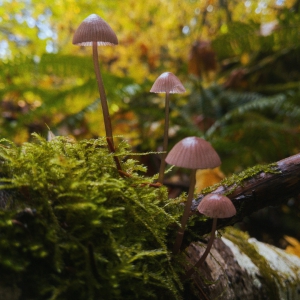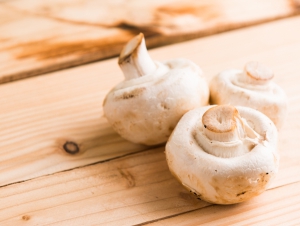As the sun's warm embrace blankets the earth, a quiet wonder emerges beneath the forest canopies, in fields, and even in our own backyards. Mushrooms, those enigmatic and diverse organisms, have their own story to tell during the summertime. From vibrant hues to hidden ecosystems, let's embark on a global adventure to explore how mushrooms flourish during this magical season.
1. Bountiful Forests of North America
In North America, the summertime brings forth a bountiful display of wild mushrooms. From the iconic morels to the majestic chanterelles, forests come alive with a myriad of shapes, colors, and flavors. Enthusiastic foragers take to the woods to harvest these gastronomic treasures, while fungi experts study their ecological roles. The diverse landscapes of the continent offer a playground for mushrooms, showcasing the symbiotic dance between these fungi and the trees they call home.
2. European Forests
Across the Atlantic, European forests present their own captivating tales of summertime mushrooms. The enchanting forests of France, for instance, are famous for their delectable truffles. Skilled truffle hunters and their faithful dogs work tirelessly, seeking the precious fungi hidden beneath the earth. Meanwhile, the United Kingdom's woodlands come alive with fairy tale-esque mushrooms, like the iconic fly agaric, adding a touch of whimsy to the landscape.
3. The Fungi Fiesta in South America
In the lush rainforests of South America, a fungi fiesta unfolds during the summer months. These tropical forests, teeming with life, harbor an incredible diversity of fungi, many of which remain undiscovered by science. These mushrooms play vital roles in the ecosystem, breaking down organic matter and supporting the balance of the rainforest.
4. The Magic of Asian Fungi
Across Asia, a rich tradition of mushroom cultivation and consumption has been practiced for centuries. From the revered shiitake to the intriguing lion's mane, Asia's mushroom culture is deeply intertwined with its culinary heritage and traditional medicine. The summertime in Asia brings forth an abundance of mushrooms, enriching the regional cuisine and adding a burst of umami flavor to dishes.
5. Hidden Gems in Australia
Even in the arid landscapes of Australia, mushrooms find a way to thrive during the summer months. Fungi like the desert truffle emerge from the sandy soil, revealing the adaptability and resilience of these organisms. In this challenging environment, mushrooms play a unique role, contributing to the delicate balance of the ecosystem.
From the mystical forests of North America to the rainforests of South America, the summertime mushroom stories from around the world reveal the incredible adaptability, diversity, and significance of these organisms. As we enjoy the warm months, let's take a moment to appreciate the hidden wonders beneath our feet - the mushrooms that quietly remind us of the magic of nature and its ceaseless cycles of life and renewal. Whether foraging for a culinary delight or simply reveling in the beauty of these fungi, the summertime offers a perfect opportunity to connect with the fascinating world of mushrooms.
Daniel Dajewski of Agro-Projects discusses the differences between the US and European mushroom markets, and outlines the significant changes the American sector needs to undertake to modernise.
The first European cultivated mushrooms were grown in 1650 in France, while the first American ones were in 1892 in Pennsylvania. While the strategies for mushroom growing differ between continents, differences are becoming fewer as American growers look for Agro-Projects and other European partners to assist with modernisation.
The US sells almost 340,000 tons of mushrooms annually, according to the USDA National Agricultural Statistics Service for 2020-2021. This figure is nearly the same as Poland,3 but the figures for the US in 2022 appear to be much higher – up to 500,000 tons.
The European Mushroom Growers Group (GEPC), whose members are 10 EU member states, produced 1,095,000 tons of mushrooms in 2020. Based on new facilities in Europe, built courtesy of the Polish contractor Agro-Projects, those volumes are continuously increasing: three farms have already appeared in France, as well as some in Poland, Romania, Belarus and other countries. According to European experts, production from EU members in 2022 is set to be around 1,160,200 tons.
Please read the full article here.
Source: New Food Magazine























